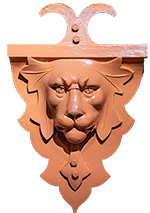Progress Report - August 2023
Our apologies for this update being quite overdue. This is not, of course, due to inactivity, as plenty has been happening.

Plenty happening!
In the last report we referred to the ordering of new plinth stones and steel. We discovered that there was still work to do to specify the detail.
Behind the scenes we have been dealing with clarification with the stone suppliers over the new stone for the plinths – these are now due for delivery imminently – and about detail design with the steel fabricator and structural engineer. This took much longer than we ever imagined, but the steel will go into production during September.
We have a new plan for the sewers to run to one of the deep mains sewers that run to the back of the carriage shed, around 5 metres below ground. An application has been submitted to Thames Water to connect to the drain, and we will soon be in a position to negotiate the change with the Planners. The route will go under Shanty Town, so won’t actually be dug until the items in store there have been used on the building. This means we are spared the difficulties of building a small sewage treatment plant on the Broad Gauge Loading Dock, and, more importantly disposing of the solids from time to time. The Loading Dock does now have the northern soakaway in it, and will also have a rainwater harvesting unit when we are ready to install it.
The Thursday gang has been busy digging trenches for drainage, soakaways and other services, with some help from the JCB and mini-digger.
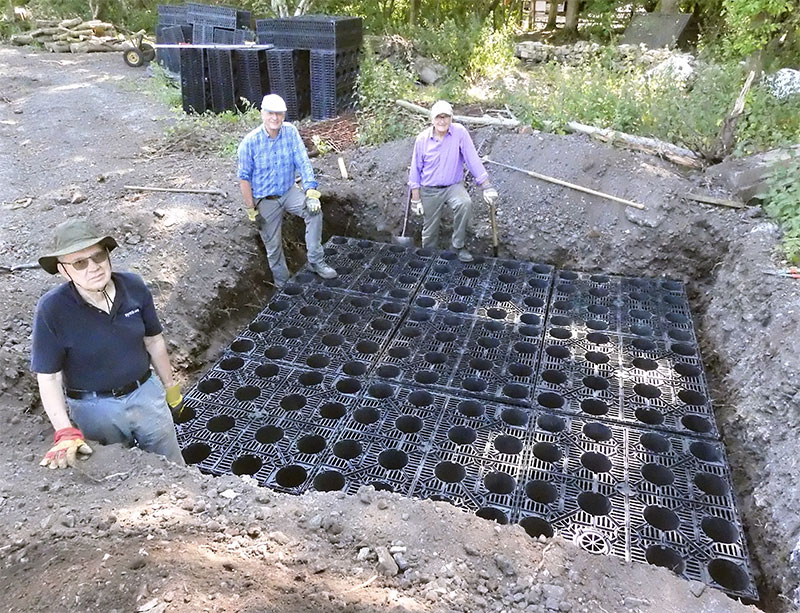
Tim Masson, Ian Kinloch and Alan Whiffen trial positioning soakaway crates in Heyford Forest - The Southern soakaway

Robert Heron and Tim Masson placing crates in their final position to form the Southern soakaway
Because there are so many services, often very close together and needing to run at different depths, much of the trench and hole digging has been done by hand. This has included:
- Foul drainage
- Rainwater drainage and two soakaways made up from crates
- Ducts for electrical cable
- Duct for possible air source heat pump pipes
- Water pipes, both for fresh water and for harvested rainwater for the WCs.
- Inspection chambers where drains meet
- 2 silt traps to keep debris from entering the soakaways
- Rodding eyes
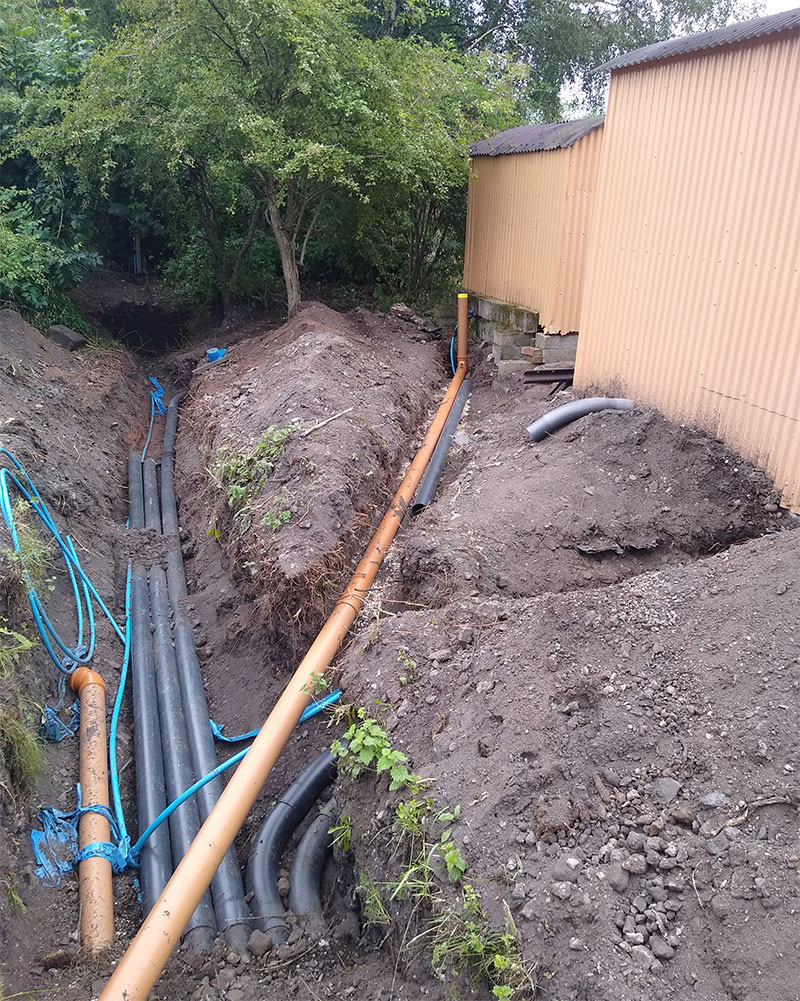
A myriad of drainage pipes, water pipes and ducts
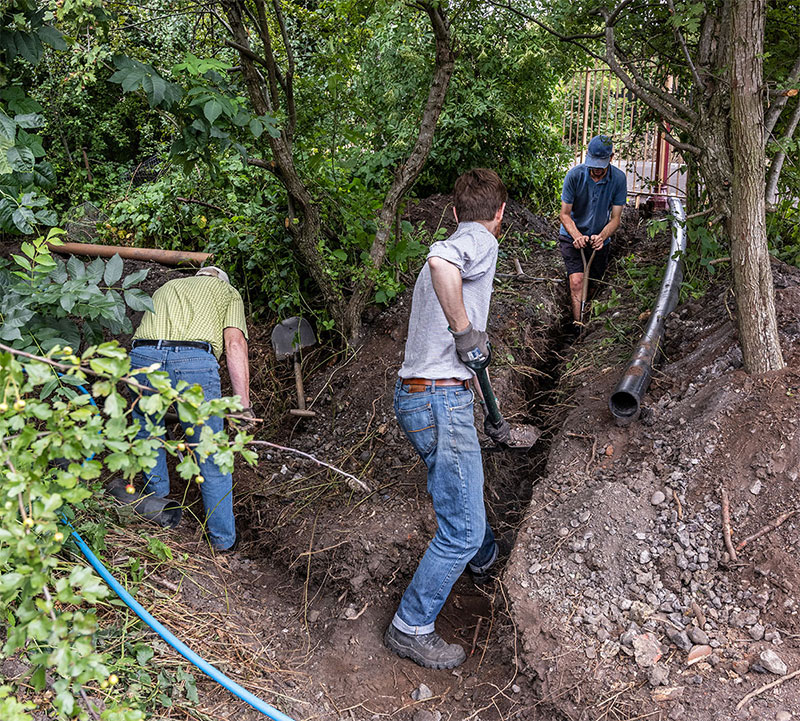
Trenching by hand in the shrubbery
At the beginning of August we escaped our compound and installed services to the north of the site, behind the platform and on the loading dock. This work was part of our annual work week when volunteers were on site every day, combining the usual hard work with social activities. During the week we installed a 3m x 3m soakaway; an additional drain under the platform access path; ducts into the first hut where we will probably install the air source heat pump; electrical ducts, a foul drain and water (including standpipe) to the second hut, which one day we hope will be replaced by the cast iron urinal originating from Castle Cary; ducting for the electrical supply to the platform lights (not yet complete) and, finally, extending the water supply ready for the future Broad Gauge Engine House. We are sure that loco crews and carriage cleaners will be delighted to have access to water at the north end of the site for the first time.
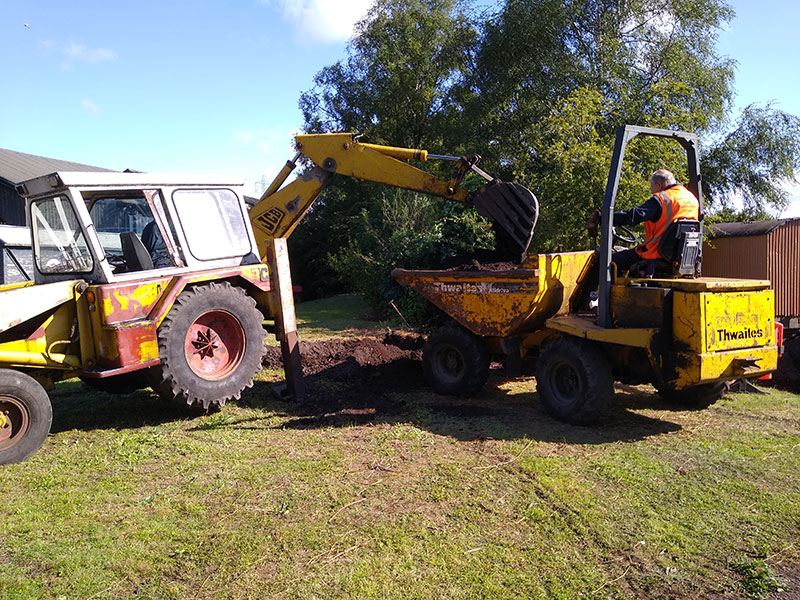
Dave Godfrey digging out the Northern soakaway pit with the JCB and Mick Howse taking the spoil away in the dumper.
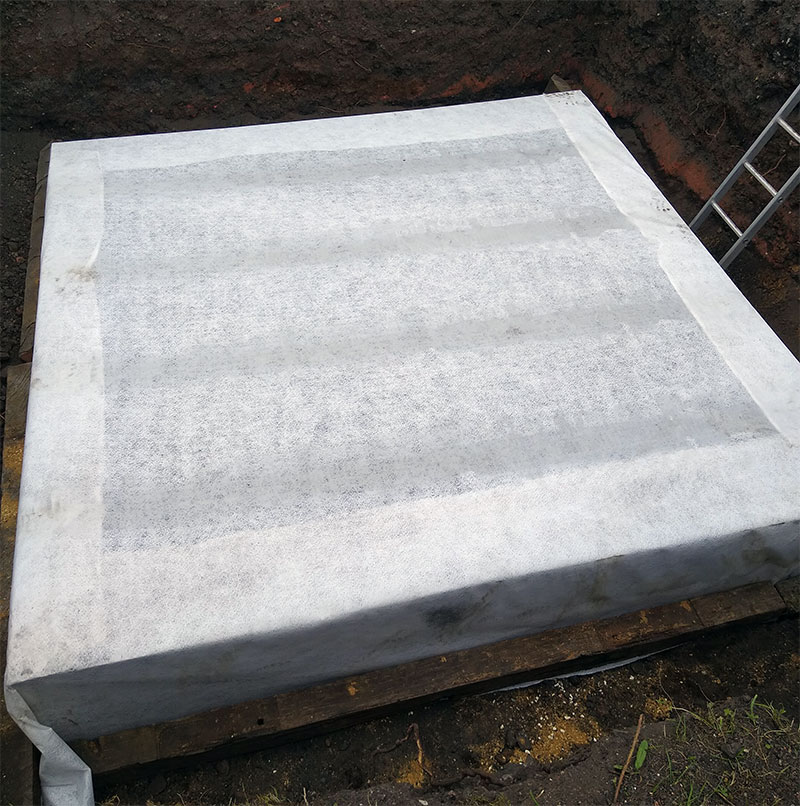
Northern crate soakaway with fabric wrap (note the 'Hospital corners').
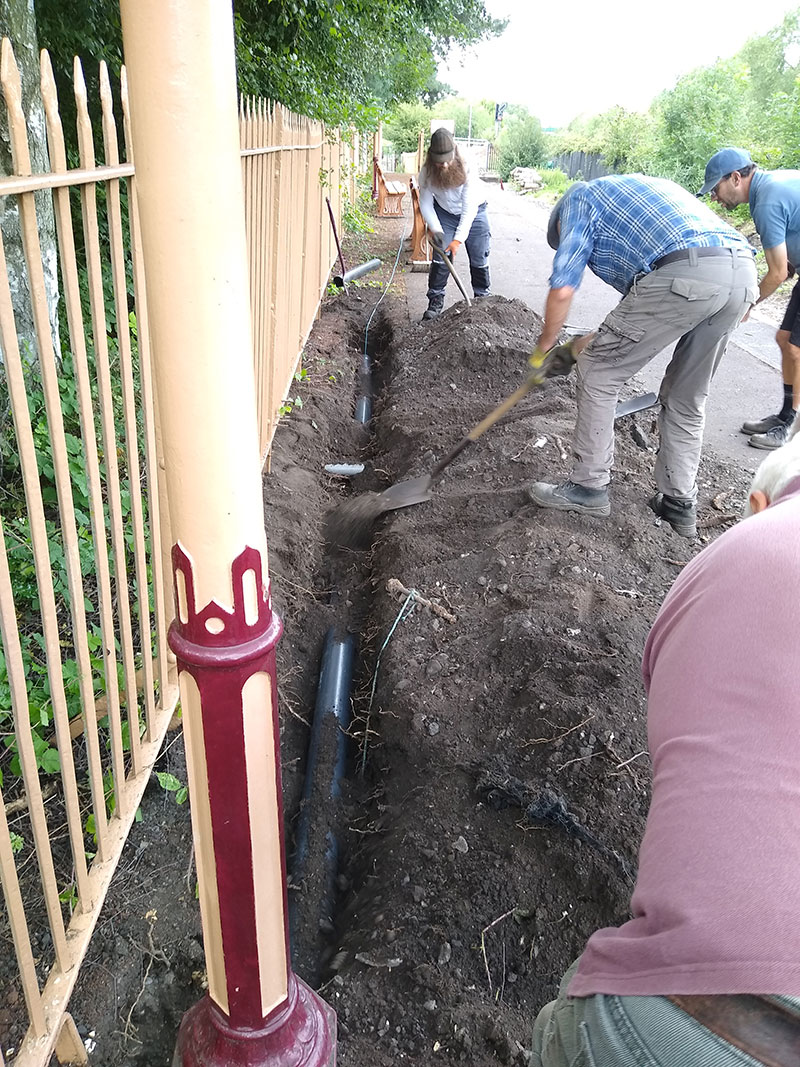
Installing ducting for the electrical supply to the platform lamps at Oxford Road. Note how we try to go under tree roots and other pieces of duct. Ian Lynagh, Andrew Mitchell, Ian Kinloch and Alan Price.
All the trenches etc are partly filled with sand, shingle or sieved soil to ensure they bed down securely, without the risk of being pierced by sharp stones. When the trenches are filled there is more graded material to be added so the ducts and pipes are encased. The drainage engineer has allowed us to fill in around the soakaways with the material we excavated, as it is proven to drain extremely well.
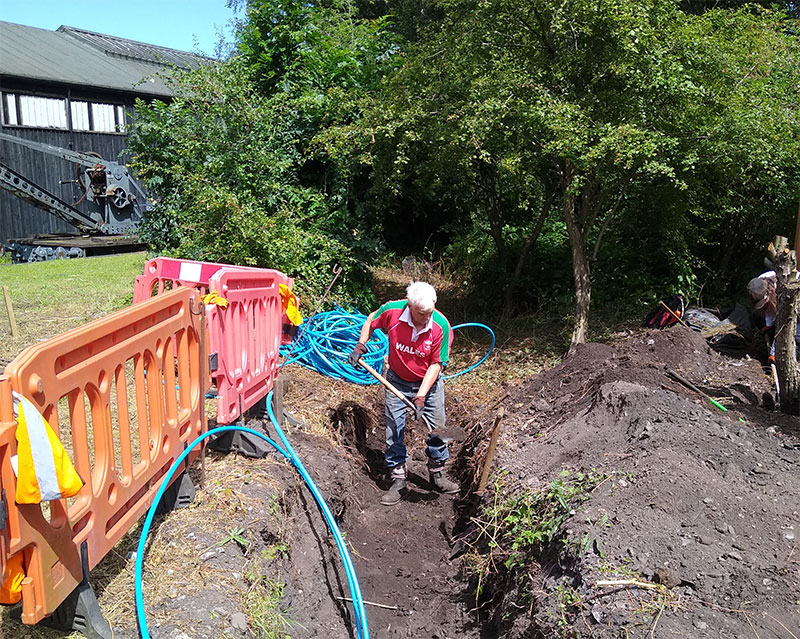
Alan price backfilling around water pipes
Whilst some of the water pipe and ducting trenches can now be fully filled in, the rainwater and foul drains are largely exposed still until we complete air soundness tests and have an inspection by the local authority.

Lionel Robbins backfilling drainage pipes with pea-grit
I mentioned earlier that work-week was not all hard work. During the week we enjoyed a few beers, especially in the temporary donation bar in the Travelling Post Office; we participated in Workers’ Playtime and drove Pendennis Castle; enjoyed some good meals (including the Barbecue and entertainment put on for volunteers and staff on the Saturday night) and, when the weather turned bad over the second weekend, took a trip to STEAM in Swindon and to the Chinnor and Princes Risborough Railway to see 4144 in action!

Ian Kinloch left in charge of 4144 at Princes Risborough - We don’t usually get on engine footplates.
For variety, we have undertaken a few more tasks for the general development, notably moving the long-forgotten diamond brick piles onto new pallets out of the way of the main demonstration line 'extension' to enable a couple of trees to removed. We have helped clear up various bits of tree too. The diamond bricks will one day be used to pave the platform. Only the area under the canopy would have had slabs originally as the bricks ensured safety in frosty weather.
Looking ahead, once the building control approval is given, we will reinstate the ground everywhere, and hopefully the site will again return to a state of tidiness, as the piles of soil get used up or moved away. (LATE UPDATE - 15-Aug-2023 - Bulding Control visited today and has approved our drainage arrangements - Hurrah!)
After that we will be helping to erect the steel framework that will ensure the wind load on the canopy is directed through steel rather than the walls. We don’t expect to lay any stone this year, as the budget won’t allow us to employ a contractor, but fingers crossed for next year…
Over the winter, we will look at the Castle Cary urinal and assess whether it can be repaired; and start looking at formers for doors and windows and maybe start the repair of the doors and windows.
Behind the scenes, we will be returning to assessing our photographic record of unidentified stone components, to give us a shopping list of stone, especially as we can expect a long lead in for new pieces – we are well over the estimate of 12 to 14 weeks for the plinth stones, so we need to get on with this if we are to contract with a mason next year.
If you want to join us, we are almost always working on Thursday from about 10.00 to 16.00, but sometimes at other times at the weekend – get in touch with Tim Part via the Didcot office or by sending an e-mail to gws.heyford@outlook.com, if you are interested.
